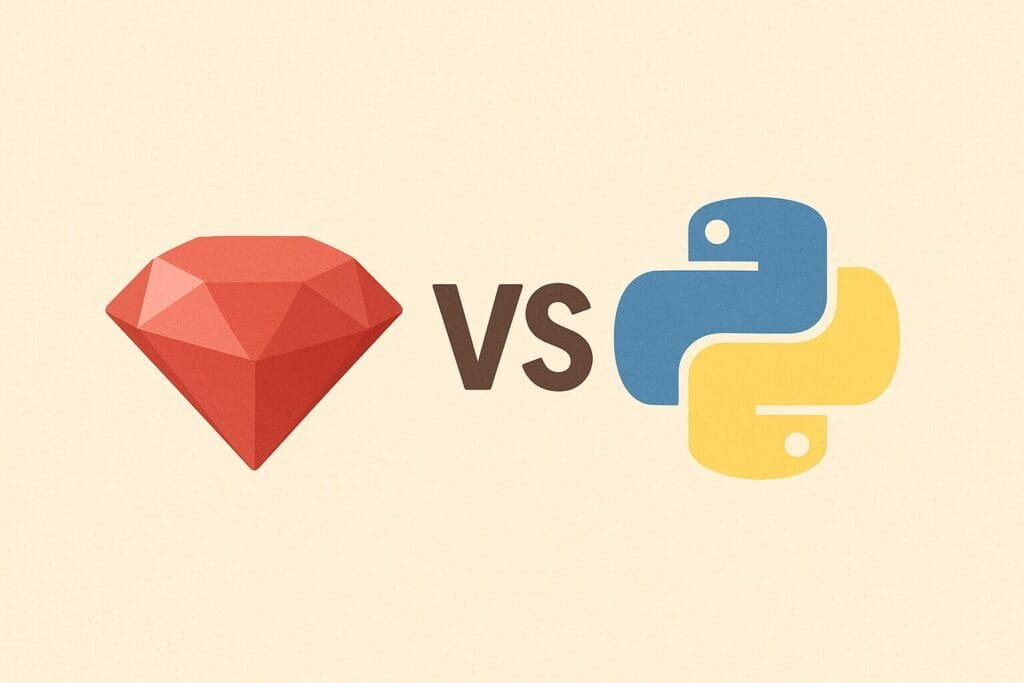When it comes to building a successful startup, choosing the right programming language is one of the most crucial decisions. Both Ruby and Python have been industry favorites for years. They power thousands of applications and have strong communities behind them. However, if you are launching a startup, you may be wondering: Ruby vs Python, which is the best choice? This article will explore their pros, cons, use cases, and provide a detailed comparison to help you make the right decision.
Why Programming Language Choice Matters for Startups
Startups operate under tight deadlines, limited budgets, and the need to deliver scalable, user-friendly products. The programming language you choose will impact development speed, hiring talent, long-term maintainability, and even investor confidence. Both Ruby and Python are known for simplicity and rapid development, but they shine in different areas.

Overview of Ruby
Ruby is a dynamic, open-source programming language created by Yukihiro Matsumoto in the 1990s. Its most famous framework, Ruby on Rails, revolutionized web development by allowing developers to build full applications quickly with convention over configuration. Ruby emphasizes developer happiness, productivity, and clean syntax.
Key Advantages of Ruby
- Ruby on Rails provides rapid prototyping and a mature ecosystem for web applications.
- Convention over configuration reduces repetitive coding tasks.
- Strong community support and gems (libraries) for almost every functionality.
Limitations of Ruby
- Performance may not be as fast as some alternatives.
- Declining popularity compared to Python makes hiring talent harder.
- Best suited for web apps, less versatility for other domains.
Overview of Python
Python, created by Guido van Rossum in 1991, has become one of the most popular programming languages in the world. Known for its readability and vast ecosystem, Python is not only used for web development but also for data science, machine learning, artificial intelligence, and automation. For startups seeking scalability across industries, Python is often the go-to choice.
Key Advantages of Python
- Readable, beginner-friendly syntax ideal for small teams and startups.
- Extensive libraries and frameworks for web apps (Django, Flask), data science, and AI.
- Strong demand in the job market makes hiring developers easier.
Limitations of Python
- Web development can sometimes be slower compared to Ruby on Rails.
- Dynamic typing can cause runtime errors if not carefully tested.
- Performance may lag behind compiled languages like C++ or Java.
Ruby vs Python: A Direct Comparison
| Criteria | Ruby | Python |
|---|---|---|
| Learning Curve | Moderate, requires familiarity with Rails for full potential | Beginner-friendly, very easy to learn and read |
| Primary Use Case | Web development (Ruby on Rails) | Web development, data science, AI, automation |
| Community & Libraries | Strong Rails community, many gems | Massive global community, huge ecosystem of libraries |
| Performance | Good for small to medium web apps | Flexible, but slower for high-performance needs |
| Startup Friendliness | Excellent for rapid prototyping web apps | Great for versatile products and scalable solutions |
Which Startups Use Ruby or Python?
Some of the world’s most famous startups began their journey with Ruby on Rails, including Airbnb, GitHub, and Shopify. On the other hand, Instagram, Dropbox, and Pinterest have been built with Python. Both languages have proven their scalability and reliability in real-world startups.
Which One Should Your Startup Choose?
The choice between Ruby and Python depends on your startup’s focus:
- If you want to build a web application quickly, Ruby on Rails is a fantastic option.
- If you are planning to integrate AI, data analytics, or machine learning, Python is more future-proof.
Final Thoughts
Both Ruby and Python have strengths that make them excellent for startups. Ruby provides unmatched speed in web development, while Python gives you versatility and scalability across different industries. Your choice should align with your team’s expertise, your product vision, and your long-term growth strategy.
For further insights on programming languages and startup development, you can check resources like GeeksforGeeks for in-depth tutorials and case studies.

